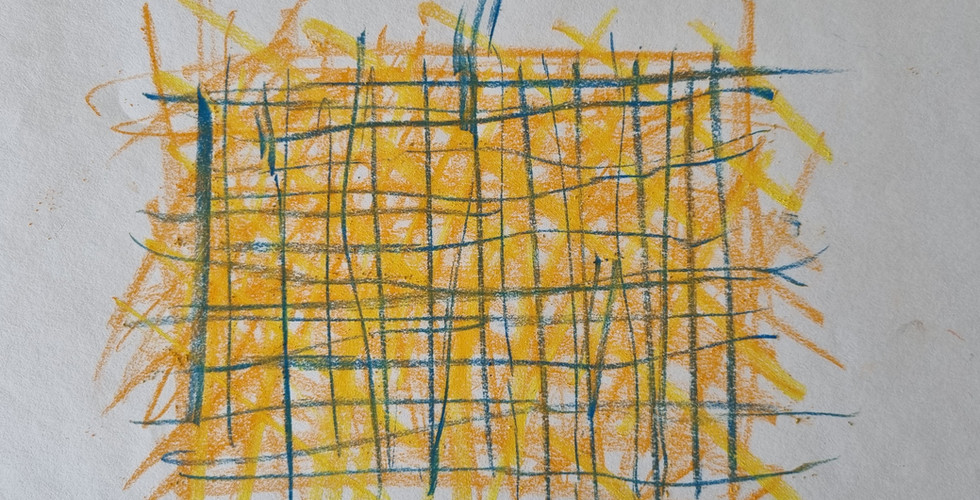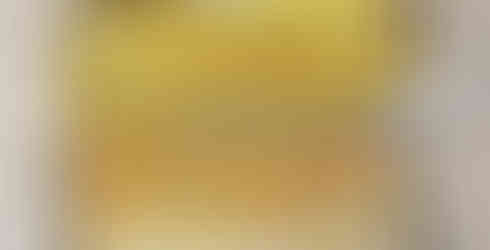Pastels - The Spirit of Matter, Orbach and Galkin, 1997
- nonaorbach
- Apr 19
- 4 min read

Medium Characteristics
Powdery pastels are made of color pigments. The chalks come in various degrees of hardness and density, depending on the binder and manufacturer. Due to their powdery quality, fixative is needed to affix them to the paper while working, to enable working with layers of color.
Various types of chalks and pastels are suggested for a therapist's workshop by Michal Awes.
Therapeutic and Spiritual Significance
By nature, pastels are aesthetic; there is beauty in every line. Their softness induces working in wide, large, light movements. A sense of open spaces and dreaminess emerges naturally.
Adina Delmoni, 2018 2018, 23.5X30 cm.
Optimism, flow, and light ensue by working with an unthreatening, controllable, linear medium. Since a pleasant outcome can be easily attained, pastels can be presented to clients having a hard time producing an aesthetically satisfying product. However, the pastels’ decorative quality may disguise and "avoid" emotional deepening. Pastels work well with movement exercises or with guided imagery and daydreams. The fixative that reinforces the pigments is the completion of the softness and instability of the pastel. Spraying it represents a metaphor for commitment to the choice of movement. It reinforces the drawing in contrast to its airiness, enabling the creator to work on it again with additional layers, deepening the artwork. Working in a technique of intermeshed lines, nets through which one can see the layer underneath, gives the drawing a sense of depth, with inner screens. When smeared with fingers or cotton wool, pastels may produce murky and superficial surfaces, from the point of view of richness of color. All colors merge into a unified tone. From the emotional point of view, it can be seen as a "trick" to get an as-if artistic result. It might also indicate an inability to commit to a profound process or look deep inside. If the client chooses this technique often, it might indicate that he is in the Wall or Threshold phase of the journey. About the dust: there is a need to observe a unique phenomenon concerning this medium. By definition, working with chalk pastels leaves colored dust scattered all around. There are always leftovers that spread beyond the surface, fall on the table, on the floor, or mark the face. This physical-emotional phenomenon is an organic part of creating with chalk pastels and cannot be overlooked. It represents a constant dialogue between creating aesthetics while simultaneously creating a need to take care of the "dirt". Unintentionally, as part of connecting with beauty, there is always separation and saying farewell to quite a significant amount of the material! Furthermore, it is a continuous dialogue between significant and non-significant, although it is all part of the same matter! In a vague way, this beauty deals with controlling, classification, departure, and separation.
Surfaces and Tools
- Fixative – an essential tool for working with pastels, in order to fix the powdery color on the paper both during the process of drawing and upon completion. Some is utilized as a part of smearing; most of it one needs to depart from. It is a metaphor of departing from an effort I made. It is an experience of dealing with adding beauty.
– Heavy paper, 240g, will improve the work. Craft paper (brown, thick wrapping paper) works very nicely with pastel colors, giving the lighter shades a true sense of light. Working on a black poster board will provide a dramatic, colorful result. o Pencils – charcoal and black pencil combine well with pastels.
Working with Pastels
o The most common way to work with chalk pastels is on a heavy, 35x50 cm. sheet of paper, stapled onto an easel. The body is free to come close and move away from the easel, the hand can produce short or long movements. The body's entire range of movement is available - a drawing produced this way gives a greater sense of mobility. A process of drawing while sitting at a table may produce a more composed work.
o Standing next to a table while the paper (up to 50x35 cm) is placed in front of the artist. It is better to stand next to the drawing or to sit on a high stool, so the body is free to move along with the work.
o With pastels one works in nets: lines that combine from different directions create surfaces that the human eye unites. To produce an image, one thickens the net in the desired area. After each layer, it is recommended to apply fixative to reinforce the color, waiting a little until the paper dries, and then continuing the work. It is possible to work with an endless number of layers, creating a wide variety of shades.
A simple demonstration of working with nets:
Initial Encounters
o Types of lines: fragmentary, flowing, strong, light, round, angular, etc. o Hatching - lines that are lightly drawn on the paper compared to ones drawn forcefully “into” the paper.
o Networks of lines drawn from all different directions – light shades on light shades, light on dark, dark on light, nets of lightly drawn lines, nets of forcefully drawn lines. Fixative should be applied between each layer.
o Color in and fill up areas on the paper until they are sealed, apply fixative and draw on this surface.
o All this can also be done on craft paper, rough paper or parchment in different colors.
o As an impressionist work - create a green color by working with blue and yellow lines, dots and nets. The eye merges the stimuli, making the painting appear green.
The text is based on The Spirit of Matter / A Database Handbook for Therapists, Artists, and Educators, Nona Orbach and Lilach Galkin, 1997
In the shop, you will find much more in several languages.













Comments